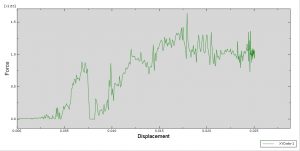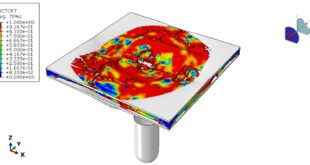In this tutorial, the numerical simulation of reinforced bricks masonry beams using GFRP reinforcement in Abaqus has been investigated. The bricks are modeled as three-dimensional solid part and GFRP sheets are modeled as three-dimensional shell parts. You can see a figure of the assemble parts at below
Natural stone structures represent the largest part of the construction heritage in the world such as bridges, civil and worship buildings or historical monuments. The natural stone is preferred for many reasons such as beauty, accessibility, hardness, durability, strength and sustainability. It is necessary to have a good understanding of the mechanical behavior of stone structures. Their main characteristics are high compressive strength and an almost null tensile strength due to the joints. Therefore, in historical structures, the use of stone is mostly restricted to members mainly working in compression. The reinforcement of masonry structures is one of the most frequently used practices in the restoration of historical buildings in the purpose to enhance the resistance. It can be performed using steel bars, rings and/or composite materials. In the last two decades, composite materials, like FRP, have been increasingly considered for strengthening and repairing both modern and historic masonry constructions. FRP are excellent candidates for strengthening because of the high tensile strength they provide, their resistance in corrosion and in their easy handling. Several papers have addressed the strengthening of masonry with carbon and glass fibers reinforced composites
The elastic behavior with Concrete Damaged Plasticity is used for the bricks. The elastic behavior lamina type with Hashin’s damage criterion is used for the GFRP sheets. The explicit step with general contact is used. The contact between blocks and the GFRP sheet is assumed as perfect contact. The mortar is used as a cohesive surface interaction by using cohesive behavior and damage parameter. The fixed boundary condition is used for the bottom rigid bodies and displacement for the top rigid body to apply force. The mesh should be fine to achieve good results.
After the simulation, all results such as stress, strain, displacement…are obtainable. You can see some figures for the results below







You can provide CAE ,INP,and English video files of this simulation here. The cost of these files is Twenty-Six Euros. you can click on the bellow bottom to beginning process
You can purchase the tutorial through a PayPal account, a Visa, or a Master card, just before payment,send me an email to this address: karampourp@gmail.com
 Abaqus tutorials Abaqus tutorials
Abaqus tutorials Abaqus tutorials




